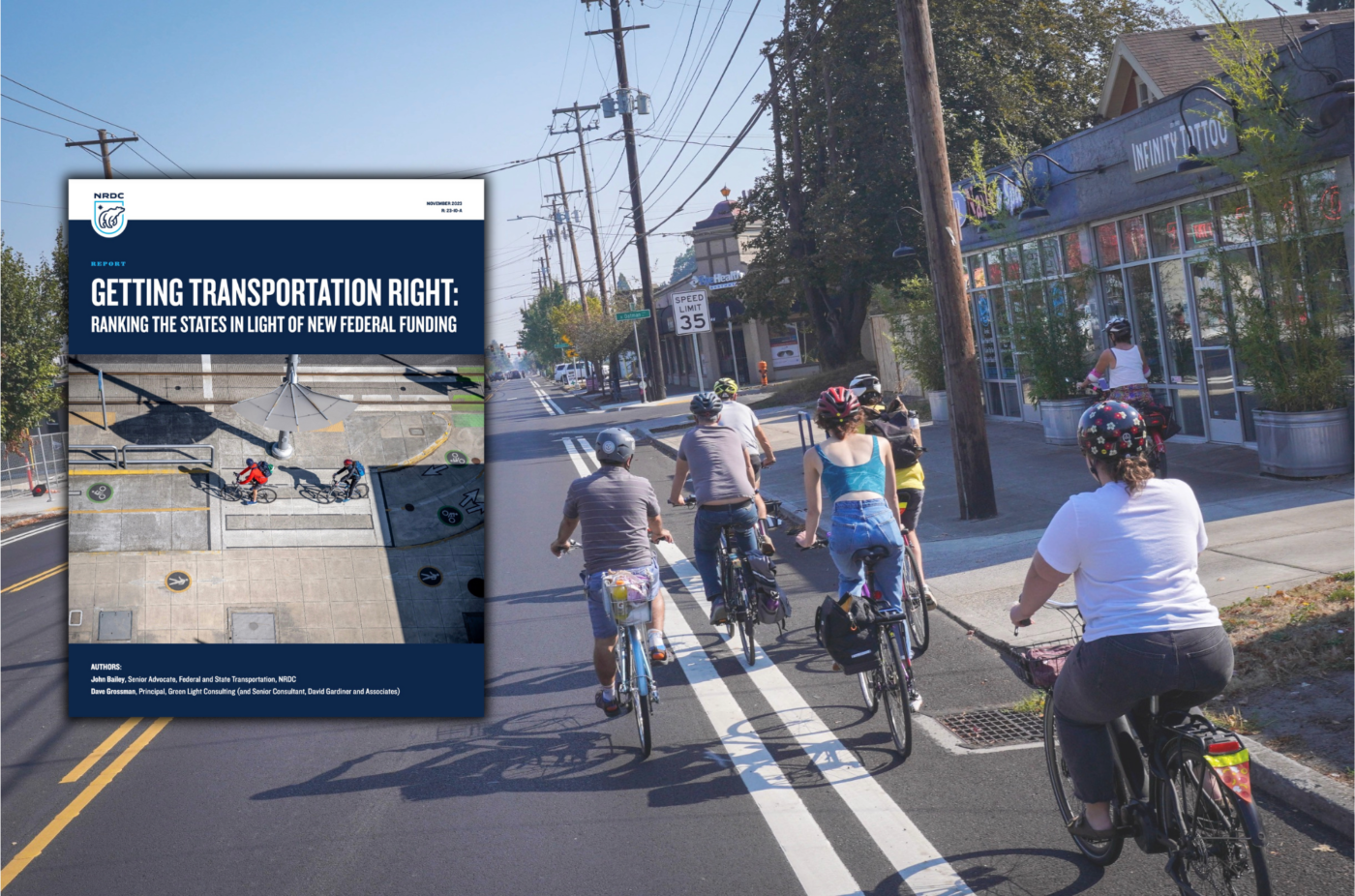Oregon’s transportation policies are among the best in the country when it comes to ensuring a massive influx of federal funding will improve the state’s march toward climate goals. Oregon earned the fourth highest ranking and placed behind only California, Massachusetts, and Vermont. Our neighbors to the north in Washington finished fifth.
That’s according to a new report from the Natural Resources Defense Council (NRDC), a nonprofit environmental organization with more than 3 million members. The NRDC’s scorecard ranked all 50 states on how their transportation, land-use, and air quality agencies are doing on five key metrics. Each metric was given a weight and there was a total possible score of 100. ODOT received 63.5 points, just shy of the 69.9 earned second place finisher Massachusetts, but over 23 points behind first place California who received 86.9.
The five metrics and their scores were: state planning for climate and equity (17), vehicle electrification (31), reducing vehicle miles traveled (VMT) through expanded transportation choices (34), system maintenance (11), and procurement (11). While Oregon Department of Transportation (ODOT) policies figured prominently in the assessment, the Department of Environmental Quality and Department of Land Conservation and Development were also judged.
The purpose of the scorecard was to highlight how important policies related to those metrics will be when it comes to investing funds from the Bipartisan Infrastructure Law (BIL) and Inflation Reduction Act. The BIL (passed in 2021) is largest single transportation investment in American history and will send $350 billion in transportation funding between 2022 and 2026.
“The aim was to identify a set of metrics that provided a useful, illustrative snapshot of state transportation actions relevant to equity and climate change,” reads the report.
The BIL will send a total of $4.5 billion to Oregon. ODOT says they have about $1.2 billion in additional funding per year through 2026. About $800 million is set aside for specific programs including $82 million for the Carbon Reduction program, $200 million for transit, and $30 million for active transportation. The rest of the funds (around $400 million) are flexible, meaning the Oregon Transportation Commission chooses what to spend them on. When the OTC was faced with how to allocate the funds last year, they chose to put 34% of the total into what they refer to as, “sustainable and equitable transportation investments.”

ODOT’s stated goal is that by 2050, they will reduce transportation-related greenhouse gas emissions to a level that’s 80% lower than what they were in 1990. Their latest data says they’re on track for a 60% reduction. Transportation is the largest sector of GHG emissions in Oregon, accounting for about 35% of the total. Of that 35%, over half of the emissions comes from passenger cars. The agency says reducing how far and how often people drive is the area where the most reductions can be made.
Unfortunately two categories ODOT received low scores on were per capita transit spending and how much federal funding they put toward bike and pedestrian projects. ODOT scored a 0.2 out of 5 on the transit metric and a 5.1 out of 10 on the bike/ped funding metric.
“We’re proud of our ranking and what we’ve accomplished so far with our federal and state partners,” said Susan Peithman, ODOT Climate Office interim director, in a statement released Wednesday. “There is much more work to be done, and we’ll keep pushing to realize our vision of a clean, safe and equitable transportation system.”
— Read the report here.




